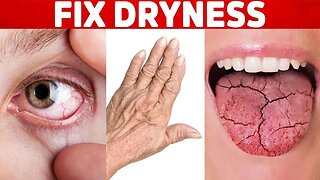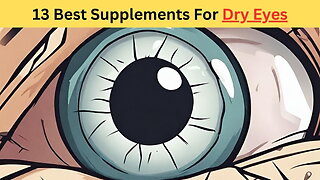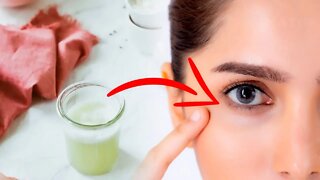Easing Dry Eyes Naturally: 3 Common Causes and Effective Solutions
Dry eye syndrome, also known as keratoconjunctivitis sicca, is a common condition that occurs when your tears aren't able to provide adequate lubrication for your eyes. This can be due to either insufficient tear production or poor quality of tears that evaporate too quickly. Understanding the causes and exploring natural treatment options can help manage this condition effectively. Below, we delve into the top three causes of dry eye syndrome and offer three natural ways to treat it.
Top 3 Causes of Dry Eye Syndrome
1. Environmental Factors
One of the most common causes of dry eye syndrome is exposure to environmental conditions that reduce tear effectiveness or increase tear evaporation. This includes dry air from air conditioning or heating systems, wind, smoke, and high altitude. People who live in cities with high levels of pollution are also at increased risk of developing dry eye symptoms.
2. Screen Use and Eye Strain
In today's digital age, prolonged use of computers, smartphones, and tablets is a significant contributor to dry eye syndrome. Staring at screens for extended periods can decrease the blink rate, which is essential for spreading tears evenly across the surface of the eye, leading to faster evaporation of the tear film.
3. Age and Hormonal Changes
As people age, tear production naturally decreases, making dry eye syndrome more common in older adults. Additionally, hormonal changes, particularly in women due to pregnancy, use of oral contraceptives, or menopause, can significantly affect tear quality and production, contributing to dry eye symptoms.
Top 3 Natural Ways to Treat Dry Eye Syndrome
1. Increase Humidity and Protect Your Eyes
One of the simplest ways to combat dry eye syndrome naturally is to manage your environment. Use a humidifier in your home or office to increase moisture levels in the air. When outdoors, wear sunglasses that wrap around to protect your eyes from wind and dust that can cause tear evaporation.
2. Practice Good Screen Habits
To reduce eye strain and dryness from prolonged screen use, follow the 20-20-20 rule: every 20 minutes, take a 20-second break to look at something 20 feet away. This helps to reset your blink rate and reduce strain. Additionally, ensure your screen is at eye level and the lighting is adjusted to reduce glare, which can exacerbate eye dryness.
3. Diet and Supplements
Diet plays a crucial role in eye health, including managing dry eye syndrome. Increasing your intake of omega-3 fatty acids, which are found in fish like salmon and flaxseeds, can help improve the quality of your tears. Additionally, staying hydrated by drinking plenty of water throughout the day supports tear production. Some people may also benefit from taking supplements like flaxseed oil or fish oil capsules, but it's important to consult with a healthcare provider before starting any new supplement.
By understanding the causes and implementing these natural remedies, individuals suffering from dry eye syndrome can find relief and improve their quality of life. However, if symptoms persist, it's crucial to consult an eye care professional for further evaluation and treatment options.
-
 5:17
5:17
Sviaton
2 months agoSharper Sight: 4 Essential Habits for Eye Health Optimization
33 -
 2:32
2:32
Sviaton
3 months agoTop 5 benefits of myopia treatment in a natural way
15 -
 11:33
11:33
Dr. Eric Berg
1 year agoThe BEST Remedies for Dry Skin, Eyes, and Mouth
152 -
 14:23
14:23
BobandBrad
2 years agoHow to Get Rid of Dry Eyes Naturally
2783 -
 3:01
3:01
Natural Cures
3 years ago $0.01 earnedRelieve Dry Eyes Naturally with Ghee
1211 -
 10:21
10:21
FoodNurish - Health, Longevity Channel
8 months ago🍶 13 Best Supplements For Dry Eyes Based on Scientific Research 👀
23 -
 2:00
2:00
Nature's Glory
6 months agoDry Eyes? No More! Expert-Approved Strategies for Lasting Relief
4 -
 2:44
2:44
Health Education
6 months agoTop 5 Home Remedies for Itching Eyes _ AAI Rejuvenation Clinic _ Health Education
63 -
 7:28
7:28
Cheeseslave
8 months agoHow I Eliminated Dry Eyes By Changing the Water I Drink
88 -
 2:20
2:20
Natural Cures
4 years agoHow to Get Rid of Tired-Looking Eyes
21